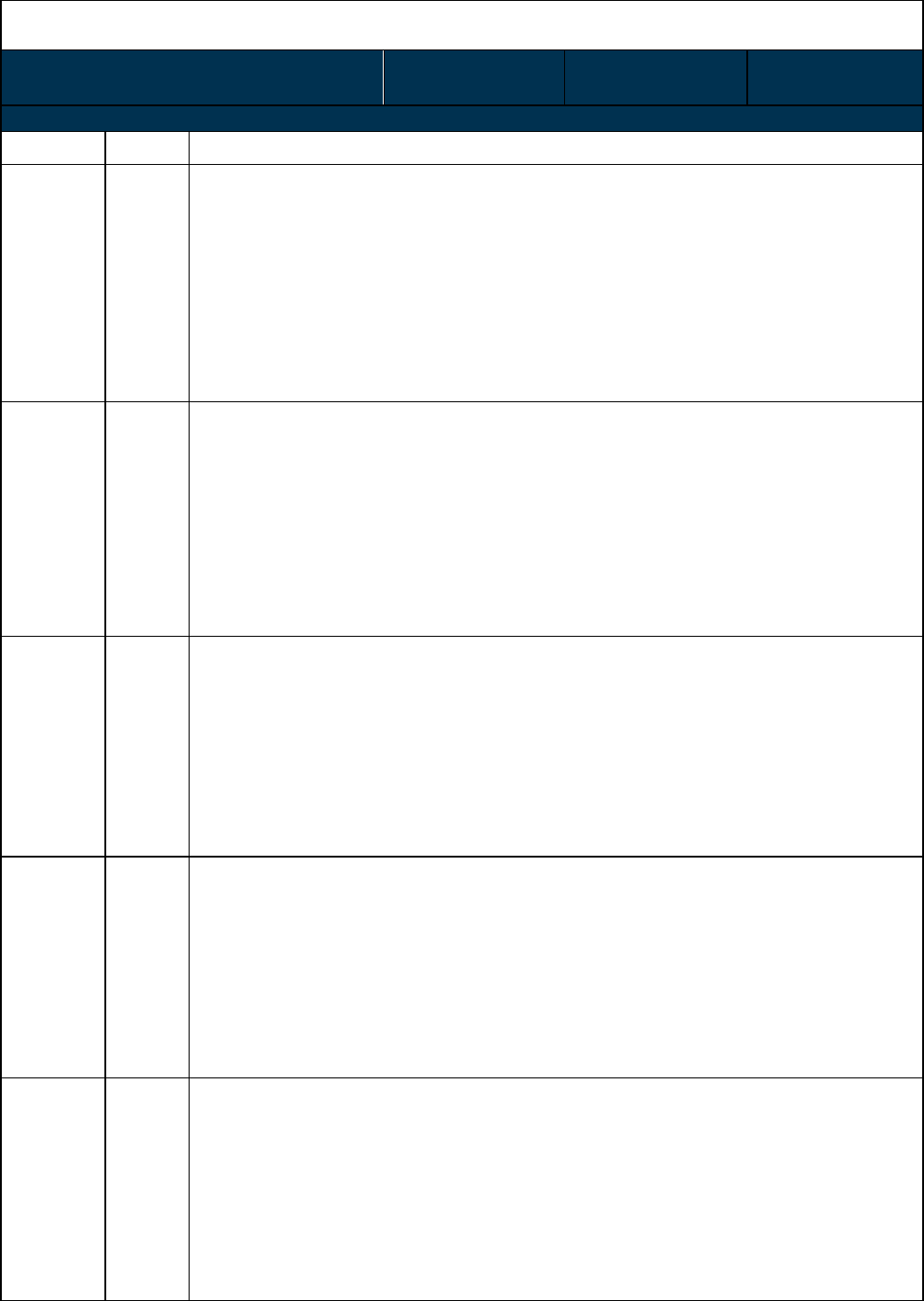
Mark Scheme (Results)
November 2021
Pearson Edexcel GCE Advanced Level
In English Language (9EN0)
Paper 1: Language Variation

2
Edexcel and BTEC Qualifications
Edexcel and BTEC qualifications are awarded by Pearson, the UK’s largest awarding body.
We provide a wide range of qualifications including academic, vocational, occupational
and specific programmes for employers. For further information visit our qualifications
websites at www.edexcel.com or www.btec.co.uk
. Alternatively, you can get in touch with
us using the details on our contact us page at www.edexcel.com/contactus.
Pearson: helping people progress, everywhere
Pearson aspires to be the world’s leading learning company. Our aim is to help everyone
progress in their lives through education. We believe in every kind of learning, for all kinds
of people, wherever they are in the world. We’ve been involved in education for over 150
years, and by working across 70 countries, in 100 languages, we have built an
international reputation for our commitment to high standards and raising achievement
through innovation in education. Find out more about how we can help you and your
students at: www.pearson.com/uk
October 2021
Question Paper Log Number P66360A
Publications Code 9EN0_01_2111_MS
All the material in this publication is copyright
© Pearson Education Ltd 2021

3
General Marking Guidance
• All candidates must receive the same treatment. Examiners must mark the
last candidate in exactly the same way as they mark the first.
• Mark schemes should be applied positively. Candidates must be rewarded
for what they have shown they can do rather than penalised for omissions.
• Examiners should mark according to the mark scheme - not according to
their perception of where the grade boundaries may lie.
• All the marks on the mark scheme are designed to be awarded. Examiners
should always award full marks if deserved, i.e. if the answer matches the
mark scheme. Examiners should also be prepared to award zero marks if
the candidate’s response is not worthy of credit according to the mark
scheme.
• Where some judgement is required, mark schemes will provide the
principles by which marks will be awarded and exemplification/indicative
content will not be exhaustive.
• When examiners are in doubt regarding the application of the mark
scheme to a candidate’s response, a senior examiner must be consulted
before a mark is given.
• Crossed out work should be marked unless the candidate has replaced it
with an alternative response.
Marking guidance – specific
The marking grids have been designed to assess student work holistically. The
grids identify which Assessment Objective is being targeted by each bullet point
within the level descriptors. One bullet point is linked to one Assessment
Objective, however please note that the number of bullet points in the level
descriptor does not directly correlate to the number of marks in the level
descriptor.
When deciding how to reward an answer, examiners should consult both the
indicative content and the associated marking grid(s). When using a levels-based
mark scheme, the ‘best fit’ approach should be used:
• examiners should first decide which descriptor most closely matches the
answer and place it in that level
• the mark awarded within the level will be decided based on the quality of
the answer and will be modified according to how securely all bullet points
are displayed at that level
• in cases of uneven performance, the points above will still apply.
Candidates will be placed in the level that best describes their answer
according to each of the Assessment Objectives described in the level.
Marks will be awarded towards the top or bottom of that level depending
on how they have evidenced each of the descriptor bullet points

4
• examiners of Advanced GCE English should remember that all
Assessment Objectives within a level are equally weighted. They must
consider this when making their judgements
• the mark grid identifies which Assessment Objective is being targeted by
each bullet point within the level descriptors
• Indicative content is exactly that – they are factual points that candidates
are likely to use to construct their answer. It is possible for an answer to
be constructed without mentioning some or all of these points, as long as
they provide alternative responses to the indicative content that fulfils the
requirements of the question. It is the examiner’s responsibility to apply
their professional judgement to the candidate’s response in determining
if the answer fulfils the requirements of the question.

5
Paper 1 Mark scheme
Section A: Individual Variation
Indicative content
Question 1
Text A
A tour guide provides a biography of his career in travel to an audience of potential clients. He
presents as professional, passionate about Egypt and accomplished within his field of expertise.
Language features that support this self-presentation might include:
Discourse/Pragmatics
• some evidence that English is not his first language with a slightly over-formal tone
• first person perspective with no direct audience address
• style and content similar to a CV, detailing qualifications, personal ambitions, work history
and goals for clients
• a variety of implied meanings, for instance, that some people may have negative views of
Egypt; that his abilities are well known and highly regarded, e.g. ‘hopefully changing their
perceptions’, ‘My recognised ability’.
Lexis/Semantics
• semantic field of tourism and travel, e.g. ‘tour groups’, ‘vacation’
• modifiers with positive connotations present his tour as something different and special, e.g.
‘unique’, ‘exclusive’
• listing of proper nouns to show qualifications and range of organisations he has worked for,
acts as evidence of his experience and knowledge of Egypt, e.g. ‘Egyptian General Tourist
Guides Syndicate (EGTGS), ‘English Tourism Guiding Post Graduate Diploma’
• nouns with positive connotations reflect recognition from others, e.g. ‘success’, ‘acclaim’
• verbs convey the impact he will have on his clients, e.g. ‘guiding’, ‘helping’, ‘changing’
• formal lexical choices, e.g. ‘utilising’.
Syntax
• adverbials used frequently to show length of time in the industry, locations worked, and
sought-after skills, e.g. ‘for the last 19 years’, ‘in Cairo’, ‘worked exclusively’
• adverbs used to intensify experiences and lifestyle, e.g. ‘extremely lucky’, ‘very healthy’
• variety of verb tenses and aspects to convey present skill set, past experience and
continuing commitments, e.g. ‘I am fluent’, ‘I received’, ‘I have been’
• almost exclusive use of declaratives enhances sense of formality
• indirect imperative to encourage audience to check testimonials, e.g. ‘Now why not take a
look’
• highly modified noun phrases convey professionalism and experience in his field, e.g. ‘a fully
qualified Egyptologist’, ‘my vast experience’
• rule of three is utilised throughout as a rhetorical device, e.g. ‘backgrounds, cultures and
countries’.

6
Text B
A young entrepreneur discusses his work ethic and the challenges involved when starting a
fitness business. He presents a dedicated, entrepreneurial and ambitious self. Language features
that support this self-presentation might include:
Discourse/Pragmatics
• discourse is spoken with non-fluency features present
• first-person perspective throughout switching to second person when discussing his decision
to relinquish responsibilities, creating self-distance
• implicature that he has grown throughout the business journey shifting from doing
everything himself to employing others with more expertise, e.g. ‘I was in touch with
everything’, ‘employ someone that’s significantly better to do it’.
Lexis/Semantics
• pre-modifiers used to highlight his work ethic and products, e.g. ‘a heavy involvement’,
‘incredible products’
• semantic fields of business and technology reflect his profession and interests, e.g.
‘websites’, ‘logos’
• comparatives to demonstrate the skill level and expertise of himself and others, e.g. ‘better’
• superlatives to show scale of ambition for the company, e.g. ‘the biggest brand’
• metaphor to convey true feelings and instinct regarding decisions, e.g. ‘know in your heart
of hearts’.
Syntax
• frequent use of adverbs throughout to intensify his feelings, e.g. ‘so so so difficult’,
‘absolutely pride’
• declaratives support an informative function detailing the origins and growth of the business
• adverbials of time and subordinate clauses show the timeframe of how the company
developed, e.g. ‘when Gymshark first started’, ‘during the first two years’
• use of first-person plural pronoun referring to the Gymshark team shows how the company
has expanded beyond his own initial involvement, e.g. ‘we wanted to change the world’
• post-modified noun phrases provide extra detail and convey ambitions, e.g. ‘the biggest
brand in the world’, ‘a single point of failure’.
Phonology
• pronunciation presents a youthful and relaxed persona, e.g. ‘little /lɪʔļ/’
• regional accent is present, e.g. ‘some /sʊm/’.

7
AO4 – explore connections across data
• Both texts are personal and have a function to inform. Text A is informative with the aim of
persuading potential clients to book a tour. Text B is informing viewers of the work involved
in setting up a business to provide insight into the processes.
• Both texts are highlighting what they perceive to be their most positive qualities that
contribute to their expertise or success. Text A focuses on qualifications and work
experience to instill confidence in clients. Text B’s focus is on his creativity, work ethic and
versatility which allowed him to fulfill many roles within his business.
• Text A is more formal and professional as he is selling a service and relies on customer
satisfaction to gain testimonials to help sell more tours. Text B is more informal and relaxed
to be accessible for the audience who may be seeking advice/insight to start a business
themselves.
These are suggestions only. Accept any valid interpretation of the speaker’s/writer’s purposes
and techniques based on different linguistic approaches.

8
P
lease refer to the Specific Marking Guidance on page 3 when applying this marking grid
.
AO1 = bullet
point 1
AO2 = bullet
point 2
AO3 = bullet
point 3
AO4 = bullet
point 4
Level Mark Descriptor (AO1, AO2, AO3, AO4)
0
No rewardable material.
Level 1
1–6
Descriptive
•
Knowledge of methods of language analysis is largely unassimilated.
Recalls limited range of terminology and makes frequent errors and
technical lapses.
•
Knowledge of concepts and issues is limited. Uses a descriptive
approach or paraphrases with little evidence of applying understanding
to the data.
•
Lists contextual factors and language features. Makes limited links
between these and the construction of meaning in the data.
•
Makes no connections between the data.
Level 2
7–12
General understanding
•
Recalls methods of language analysis that show general understanding.
Organises and expresses ideas with some clarity, though has lapses in
use of terminology.
•
Summarises basic concepts and issues. Applies some of this
understanding when discussing data.
•
Describes construction of meaning in the data. Uses examples of
contextual factors or language features to support this.
•
Gives obvious similarities and differences. Makes links between the
data and applies basic theories and concepts.
Level 3
13–18
Clear relevant application
•
Applies relevant methods of language analysis to data with clear examples.
Ideas
are structured logically and expressed with few lapses in clarity and
transitioning. Clear use of terminology.
•
Clear understanding and application of relevant concepts and issues to
data.
•
Explains construction of meaning in data by making relevant links to
contextual factors and language features.
•
Identifies relevant connections across data. Mostly supported by clear
application of theories, concepts and methods.
Level 4
19–24
Discriminating controlled application
•
Controlled application of methods of language analysis supported with
use of discriminating examples. Controls the structure of response with
effective transitions, carefully chosen language and use of terminology.
•
Discriminating selection and application of a range of concepts and
issues to the data.
•
Makes inferences about the construction of meaning in data by
examining relevant links to contextual factors and language features.
•
Analyses connections across data. Carefully selects and embeds use of
theories, concepts and methods to draw conclusions about the data.
Level 5
25–30
Critical and evaluative
•
Critical application of methods of language analysis with sustained
examples. Uses sophisticated structure and expression with appropriate
register and style, including use of appropriate terminology.
•
Evaluative application of a wide range of concepts and issues to the
data.
•
Critically examines relevant links to contextual factors and language
features. Evaluates construction of meaning in data.
•
Evaluates connections across data. Critically applies theories, concepts
and methods to data.

9
Section B: Variation over Time
Indicative content
Question 2
Text C
Text C is from a book published in the 18
th
century which provides advice and guidance on
the maintenance and styling of hair. This extract contains instructions for a lady’s maid on
how to attach a small hat and various ornaments onto the head to create an elaborate hair
style. Language features might include:
Discourse/Pragmatics
• reference to servant and extravagant style accessories reflect fashion of high society
at the time
• the guidance has a tone of expertise
• formal authoritative voice
• assumptions about societal norms and expectations of female appearance, e.g. ‘no
genteel lady…’.
Orthography
• spelling differs from modern spelling but is largely standardised, e.g. ‘crouded’,
‘head-ach’.
Lexis/Semantics
• lexis that appears formal to the modern reader, e.g. ‘incommoding’
• semantic field of hairstyling, fashion and jewellery, e.g. ‘pomatum’, ‘toke’, ‘pearls’
• connotations of affluence, e.g. ‘diamonds’
• identification of individuals reflects society and household roles, e.g. ‘The lady’, ‘her
maid’
• simile adds description to aid instruction, e.g. ‘like a purse’.
Syntax
• frequent use of modal verbs conveys intention of instructions, e.g. ‘should be placed’,
‘must wait’
• frequent use of imperatives to direct through task, e.g. ‘place a pin’, ‘wind them up’
• modified noun phrases describe decorations and products, e.g. ‘a few good feathers’,
‘a little soft pomatum’
• second person for direct instruction, e.g. ‘you may’
• intensifiers to express quantities and states, e.g. ‘very large net’, ‘quite sufficient’
• adverbials to show timings of actions and specific placements of hair/accessories, e.g.
‘around the face’, ‘After the curls’, ‘in the middle’
• subordinate clauses add extra detail to instructions, e.g. ‘while you are examining’, ‘if
there are any pins’.

10
Text D
Text D is a 21st century blog post, from the website GlamCorner which offers advice on
beauty, fashion and styling. The post provides guidance to women on the best hairstyles
to wear with different fascinators when attending a horse racing event. Language features
might include:
Discourse/Pragmatics
• there is a promotional aspect to the post with reference to brands and collaboration
suggesting the writer has most likely been paid to endorse their products, e.g. ‘created
by Studio Aniss, exclusively for GlamCorner’
• persuasive techniques are utilised to encourage purchasing. The text presupposes a
decision is already made to buy, e.g. ‘when you hire...’
• synthetic personalisation implies an equally enthusiastic recipient
• the looks are presented as easily achievable, e.g. ‘ready-to-wear’, ‘do it at home
yourself’
• the post heavily targets desires of beauty ideals and being attractive, e.g. ‘a head-
turning Race Day look’.
Lexis/Semantics
• semantic field of fashion, beauty and hair, e.g. ‘runway’, ‘lipstick’, ‘side bun’
• modified noun phrases describe products and looks as highly desirable, e.g.
‘beautifully modern updo’, ‘ornate headpieces’
• colloquial language and collocations help to create the excitable tone, e.g. ‘comfort
zone’, ‘shy away’, ‘sky’s the limit’
• connotations of luxury and glamour, e.g. ‘decadent jewels’, ‘crystal earrings’
• similes connote stereotypical female childhood aspirations, e.g. ‘like a princess’,
‘Like…fairytale’
• adjectives create images of a one of a kind look and standing out from the crowd, e.g.
‘dramatic’, ‘perfect’, ‘unique’.
Syntax
• direct address to reader creates a rapport with the audience, e.g. ‘you’ll need to’
• imperatives direct process and encourage readers to engage in their advice, e.g.
‘Don’t be afraid of height’, ‘Pull your hair’
• frequent use of exclamatives to convey the excitement of dressing stylishly for the
races
• varied use of sentence types and present tense creates interesting, fast paced style to
engage reader
• adverbs support instructive function, e.g. ‘firmly’
• deictic phrases are frequent and refer the reader to photographs included in the text,
e.g. ‘This look’.

11
AO4 – explore connections across data
• Both texts have an instructional function with Text C conveying more directions and
description to make up for the lack of visuals. Text D also has a persuasive function as
achieving the desired look involves hiring or purchasing a fascinator from specific
brands.
• Text C’s process is complex involving many accessories and tasks performed by a
maid, reflecting the high maintenance involved in hair styling in the 18
th
Century. Text
D emphasises the ease and convenience of creating a glamorous look, which
individuals can do by themselves.
• Text C contains instructions for a maid to carry out as part of her duties in the
household and depicts a hairstyle that will be worn only by certain women in high
society. Text D implies the styles can be done and worn by anyone.
• Both texts involve creating an extravagant style with use of a headpiece to create an
impression at an occasion.
These are suggestions only. Accept any valid interpretation of the writers’ purposes and
techniques based on different linguistic approaches.

12
P
lease refer to the Specific Marking Guidance on page 3 when applying this marking grid
.
AO1 = bullet
point 1
AO2 = bullet
point 2
AO3 = bullet
point 3
AO4 = bullet
point 4
Level Mark Descriptor (AO1, AO2, AO3, AO4)
0
No rewardable material.
Level 1
1–6
Descriptive
•
Knowledge of methods of language analysis is largely unassimilated.
Recalls limited range of terminology and makes frequent errors and
technical lapses.
•
Knowledge of concepts and issues is limited. Uses a descriptive
approach or paraphrases with little evidence of applying understanding
to the data.
•
Lists contextual factors and language features. Makes limited links
between these and the construction of meaning in the data.
•
Makes no connections between the data.
Level 2
7–12
General understanding
•
Recalls methods of language analysis that show general understanding.
Organises and expresses ideas with some clarity, though has lapses in
use of terminology.
•
Summarises basic concepts and issues. Applies some of this
understanding when discussing data.
•
Describes construction of meaning in the data. Uses examples of
contextual factors or language features to support this.
•
Gives obvious similarities and differences. Makes links between the
data and applies basic theories and concepts.
Level 3
13–18
Clear relevant application
•
Applies relevant methods of language analysis to data with clear examples.
Ideas
are structured logically and expressed with few lapses in clarity and
transitioning. Clear use of terminology.
•
Clear understanding and application of relevant concepts and issues to
data.
•
Explains construction of meaning in data by making relevant links to
contextual factors and language features.
•
Identifies relevant connections across data. Mostly supported by clear
application of theories, concepts and methods.
Level 4
19–24
Discriminating controlled application
•
Controlled application of methods of language analysis supported with
use of discriminating examples. Controls the structure of response with
effective transitions, carefully chosen language and use of terminology.
•
Discriminating selection and application of a range of concepts and
issues to the data.
•
Makes inferences about the construction of meaning in data by
examining relevant links to contextual factors and language features.
•
Analyses connections across data. Carefully selects and embeds use of
theories, concepts and methods to draw conclusions about the data.
Level 5
25–30
Critical and evaluative
•
Critical application of methods of language analysis with sustained
examples. Uses sophisticated structure and expression with appropriate
register and style, including use of appropriate terminology.
•
Evaluative application of a wide range of concepts and issues to the
data.
•
Critically examines relevant links to contextual factors and language
features. Evaluates construction of meaning in data.
•
Evaluates connections across data. Critically applies theories, concepts
and methods to data.
13
Pearson Education Limited. Registered company number 872828
with its registered office at 80 Strand, London, WC2R 0RL, United Kingdom
